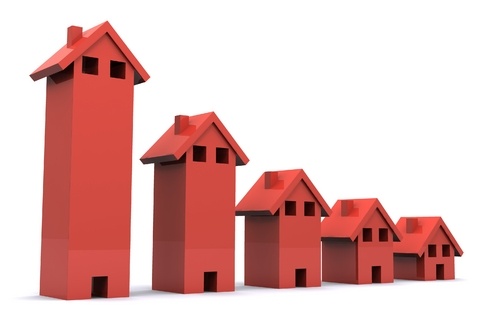
Those who begin the often long journey to building a property portfolio tend to have an aversion for debt which can prove detrimental to their long-term investment returns. The idea of using cash to purchase property is admirable, limiting debt makes perfect sense in many everyday scenarios but the use of long-term debt instruments can seriously improve your long-term property investment returns.
Do not overstretch your finances
In years gone by it was possible to obtain a 100% mortgage in the UK which led to many people investing in the buy to let property market. The idea was that rental income from investment property would be significantly higher than the cost of a mortgage. This effectively allowed investors to pay off their mortgage, increasing their property equity, using tenant income. The problem with 100% mortgages is that mortgage rates move, rental rates are dependent upon the area and if your investment property is vacant for any period of time, this can seriously impact your cash flow.
So, if for example you have £100,000 in cash to invest in the property market then why not split this between two different properties. An investment of £50,000 in cash in a property ensures that from day one you have an equity content of £50,000 if ever required. If a property was going to cost £100,000 then you would arrange separate mortgages, or a combined buy to let mortgage, for £100,000 in total. If the mortgage rate was 5% but you were able to obtain a rental yield of 10%, which is not impossible with HMOs, then not only do you have the financial headroom of the cash equity content in each property, but income should more than cover mortgage costs.
Increasing your equity
Each mortgage payment effectively increases your equity share in a property therefore after five or 10 years the combined equity share can be significant in the above example. It is then possible to use existing equity share as collateral for more property investments and more debt which is covered by rental income. If you notice, we have not even touched on the subject of capital gains which in the long term can be significant.
In order to be successful with property investment you need to be flexible and take emotion out of each decision. You may have your favourite properties, they may have emotional ties to you, but there may come a time when you need to sell and reinvest elsewhere. If for example:
You acquire a property for £100,000 with a rental yield of 10% and the value of the property increases to £150,000; then the rental yield (assuming no increase in rent) would fall to 6.66%. Your rental income would still be £10,000 a year but as a percentage of the value of the investment it would fall.
There may well be an opportunity to sell the property, banking a £50,000 profit, and reinvest in a £150,000 property with a 10% rental yield (as well as long-term potential for capital growth). This would see an increase in your actual rental income to £15,000 a year and the ability to pay off your mortgage at a faster rate.
However you could also use the £50,000 profit (and initial investment of £50,000) as part payment on other investments, acquiring two new properties for £100,000 each. This would:-
- spread your risk
- increase your overall rental income to £20,000
- increase your mortgage liabilities but they would be backed by a greater equity share and rental income
and the cycle begins again. It all comes down to relative long term value for money.
Conclusion
It is all about buying properties which offer relatively high rental yields and disposing of these properties if the rental yield falls significantly; as a consequence of an increase in the value of the property. There is an obvious argument for holding the property in the longer term and looking to bank a greater profit in the future. However, property markets tend to be cyclical and history shows us that a relatively high rental yield offer significant support to the value of a property even in troubled times.
It is simply a case of mixing and matching investments which offer high rental yields against those which offer potential for high levels of capital appreciation. In many cases a relatively high yield would indicate relatively low potential for capital appreciation, whereas potential for high levels of capital appreciation would indicate a property with a relatively low rental yield. This is not always the case and there are pros and cons to each of the investment strategies, therefore it is worth maintaining a long-term balance.

